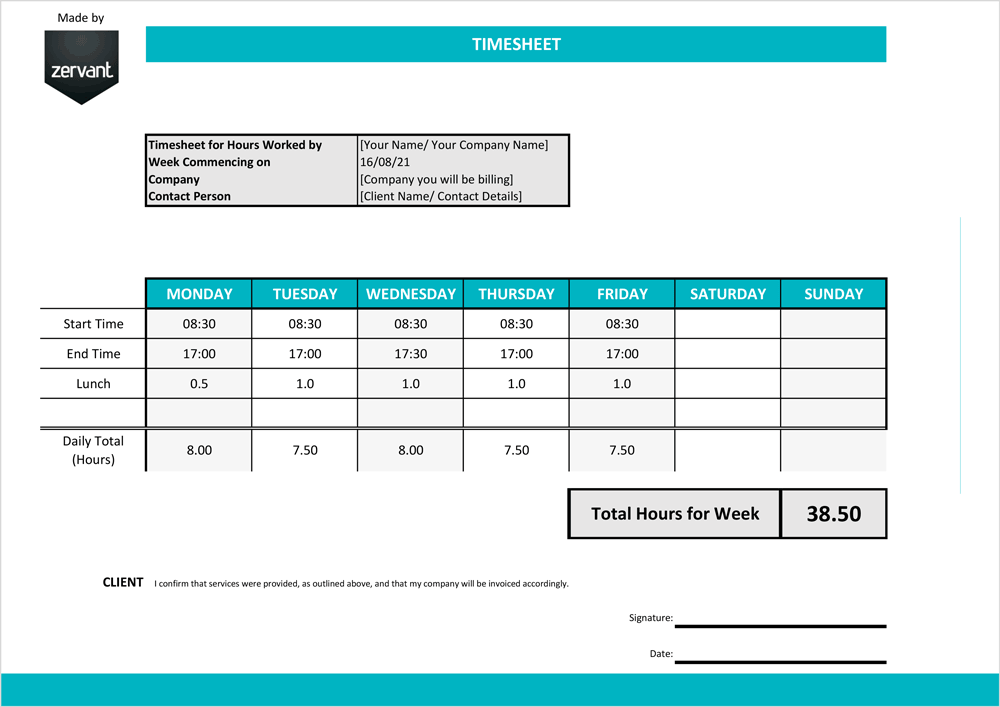In the world of freelancing, managing your time and tracking your work hours is crucial. This is where a freelance timesheet becomes invaluable. It allows you to keep track of the time you spend on different projects, ensuring accurate billing and efficient time management. In this article, we will explore the ins and outs of freelance timesheets, including how to use them effectively and the benefits they offer.
What is a Freelance Timesheet?
A freelance timesheet is a tool that freelancers use to record their work hours. It helps them keep track of the time they spend on various projects, tasks, or clients. It typically includes fields for date, start and end times, project or task description, and any other relevant details. Freelancers can use timesheets to calculate the total number of hours worked and generate accurate invoices for their clients.
Freelance timesheets come in various formats, including digital spreadsheets, online platforms, or even traditional pen-and-paper formats. The choice of timesheet format depends on personal preference, ease of use, and the specific needs of the freelancer.
Why Do Freelancers Need Timesheets?
Freelancers need timesheets for several reasons:
- Accurate Billing: Timesheets help freelancers accurately bill their clients for the work they have done. By tracking their time, freelancers can provide detailed invoices that reflect the actual hours spent on each project or task.
- Time Management: Timesheets allow freelancers to manage their time effectively. By tracking how much time they spend on different projects, they can prioritize tasks, set realistic deadlines, and avoid overcommitting.
- Performance Evaluation: Timesheets provide freelancers with valuable data to evaluate their performance. They can analyze how much time they spend on each task, identify areas of improvement, and optimize their workflow.
- Client Transparency: Timesheets offer transparency to clients. By sharing detailed timesheets, freelancers can demonstrate their work hours, justify their fees, and build trust with their clients.
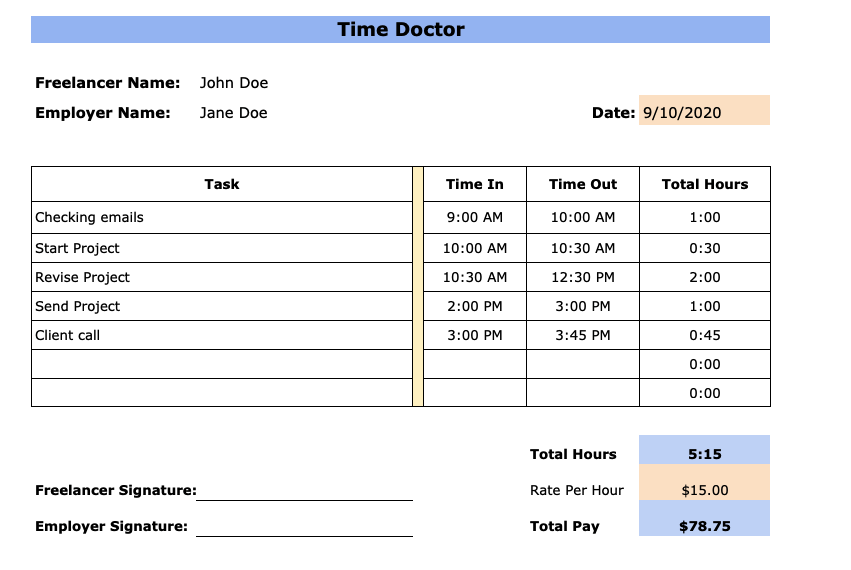
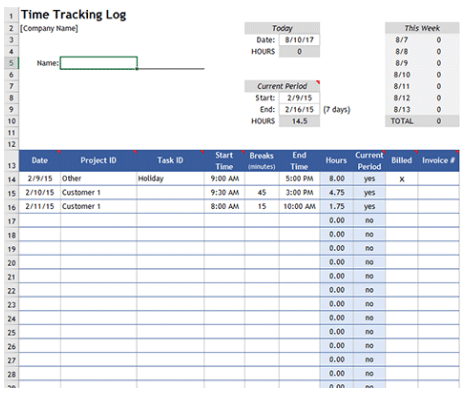
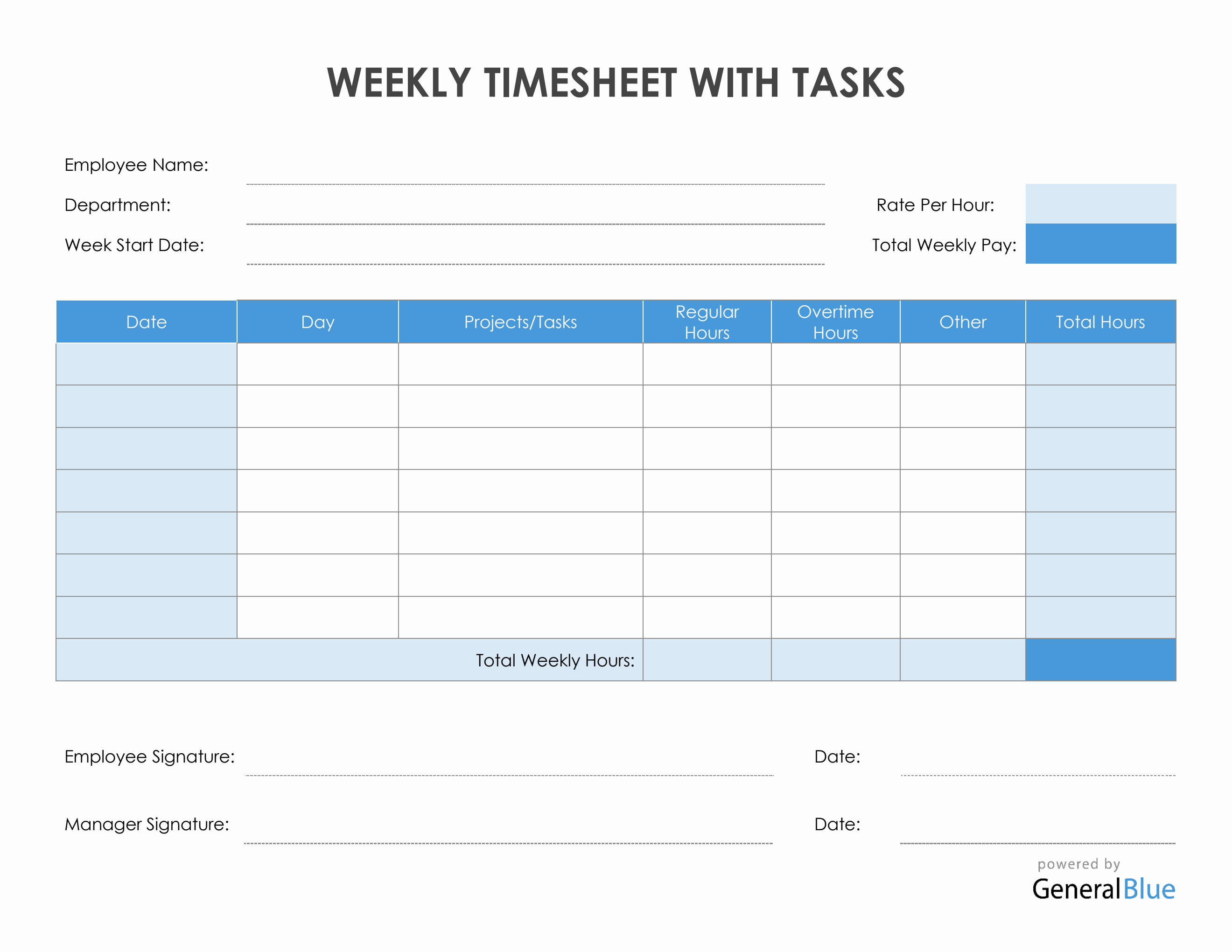
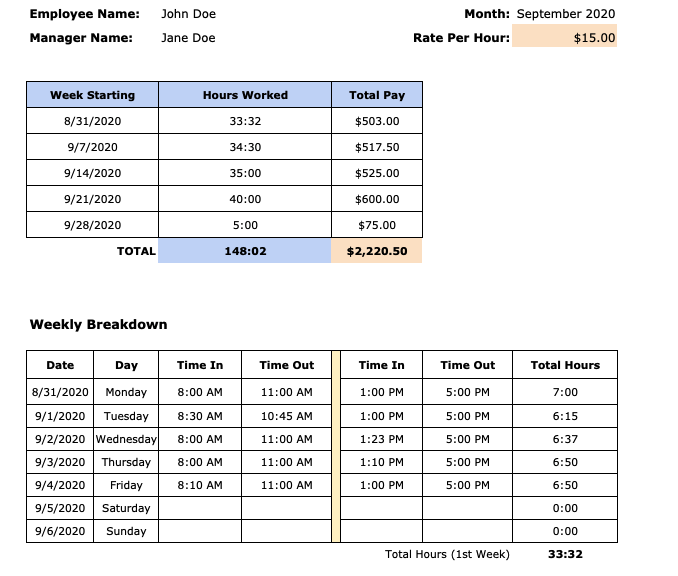
How to Use a Freelance Timesheet?
Using a freelance timesheet is a straightforward process. Here’s a step-by-step guide:
- Choose a Format: Select a timesheet format that suits your preferences and needs. Consider factors such as ease of use, accessibility, and compatibility with your devices.
- Set Up the Timesheet: Create columns for date, start time, end time, project/task description, and any other relevant fields. Customize the timesheet to match your specific requirements.
- Record Your Work Hours: Whenever you start working on a project or task, record the start time in the designated field. Similarly, when you finish working on that project or task, record the end time.
- Add Project/Task Descriptions: Include brief descriptions of the work you have done for each project or task. This helps you remember the context and makes it easier to generate accurate invoices later.
- Calculate Total Hours: At the end of each day, calculate the total number of hours worked for each project or task. Sum up the hours to get the overall total for the day.
- Review and Analyze: Regularly review your timesheets to analyze your time usage patterns, identify areas of improvement, and optimize your workflow.
- Generate Invoices: Use the data from your timesheets to create accurate invoices for your clients. Include the total number of hours worked, the hourly rate, and any additional charges or expenses.
The Benefits of Using a Freelance Timesheet
Using a freelance timesheet offers several benefits to freelancers:
- Accurate Invoicing: Timesheets ensure accurate billing by providing a detailed record of work hours. This helps freelancers avoid undercharging or overcharging their clients.
- Improved Time Management: By tracking their time, freelancers can identify time-consuming tasks, optimize their workflow, and allocate their time effectively to meet deadlines.
- Performance Evaluation: Timesheets provide valuable data for self-evaluation. Freelancers can analyze their time usage, identify productivity bottlenecks, and make informed decisions to improve their performance.
- Client Transparency: Sharing detailed timesheets with clients fosters transparency and trust. Clients can see the breakdown of work hours and understand the value they are receiving from the freelancer.
- Legal Protection: Timesheets serve as evidence of work hours in case of any disputes or legal issues. They help freelancers protect their rights and ensure fair compensation for their work.
Best Practices for Freelance Timesheet Management
Here are some best practices to help you effectively manage your freelance timesheets:
- Be Consistent: Make it a habit to record your work hours consistently. Set a routine and stick to it, ensuring that you accurately capture all your billable hours.
- Automate Where Possible: Consider using time-tracking software or online platforms to automate the process. This saves time and reduces the chances of manual errors.
- Include Breaks: Don’t forget to include breaks in your timesheets. Recording breaks helps you maintain a healthy work-life balance and ensures accurate calculation of billable hours.
- Archive Old Timesheets: Create a system to organize and archive your old timesheets. This makes it easier to access historical data for future reference or in case of any disputes.
- Regularly Review and Analyze: Take the time to review and analyze your timesheets regularly. Look for patterns, identify areas of improvement, and make adjustments to optimize your time management.
- Communicate with Clients: If you encounter any discrepancies or have questions regarding your timesheets, communicate with your clients promptly. Clear communication ensures smooth invoicing and minimizes misunderstandings.
Conclusion
A freelance timesheet is an essential tool for freelancers to track their work hours, manage their time effectively, and ensure accurate billing. By using a timesheet, freelancers can improve their workflow, evaluate their performance, and build trust with their clients. Implementing best practices for timesheet management further enhances the benefits and efficiency of this valuable tool. So, if you are a freelancer, it’s time to start using a timesheet and take control of your time and billing processes.
Freelance Timesheet Template Excel – Download
